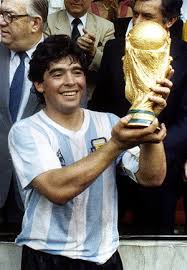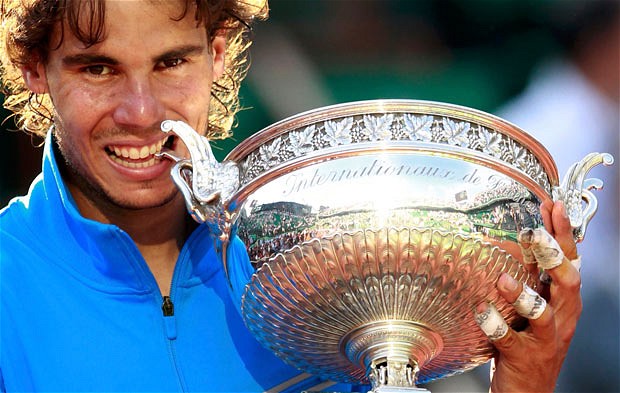Hand of God: The life and times of Maradona
Even being not quite so into football (my football knowledge woefully does not extend beyond Ronaldo, Messi and Waka Waka), I’ve heard of Maradona. As has anyone who has not been living under a rock for the last decade or so. Even though his glory years were quite before our time, we all know about this outstanding footballer. Yes, for those of you who have indeed been living under a rock, Diego Maradona is a former Argentine footballer, arguably one of the best players the game has ever seen. He can only probably come second to Pele, but again it’s a matter of whom you ask. And if controversy got some cookie points, then Maradona would win hands down. Maradona is as famous for courting controversy as he is for being a football genius.
Maradona started out as almost a child prodigy, making his professional debut with Argentina Juniors, at just shy of 16 years of age, on October 20, 1976. Yet, his football playing days began way before that, with Los Cebollitas, the junior team of the Buenos Aries based Argentina Juniors. Born to a poor family as one of six children, Maradona had a tough childhood with scarce resources. He played with his debut team for 5 years scoring above 100 goals. He then transferred to his dream team, the Boca Juniors, for a short spell and won his first league championship medal in 1982. He then transferred to FC Barcelona, for a whopping 7.6 million dollars, a world record transfer fee for those times. What followed was a tough period, riddled with injuries and an alleged cocaine addiction. However, Maradona did help Barcelona win a Spanish Cup, beating Real Madrid. During his 2 seasons, he scored 38 goals in 58 games, and got into frequent tangles with the team’s management and directors.
He then transferred to Napoli, in Italy’s Serie A for another record fee of 10.48 million dollars, a move that would make him reach the peak of his career. He led his team to a Serie A title in 1987 and 1990, an astonishing feat, at a time when the region was in turmoil, and struggling to compete with Milan and Juventus. Adored to death by fans, with kids being named in his honour and murals of him being painted in cities, Maradona also led Napoli to a win in the 1987 Coppa Italia and 1989 UEFA Cup. He is the all-time leading scorer for Napoli, having 115 goals under his belt. Maradona wore the number 10 jersey throughout his club and country career, and later in honour of his achievements, the number 10 jersey of Napoli was officially retired. While he continued to reach the heights of glory in his professional life, his personal life remained in tatters, with continuing drug use, links with mafias and even a claim of an illegitimate child. He got a 15-month ban for testing positive for cocaine, and left Napoli in disgrace in 1992. He then had brief stints at Sevilla of Spain and Newell’s Old Boys, before returning to Boca Juniors in 1995 for 2 years.
Maradona’s international career was a triumphant journey. He made his international debut against Hungary at the age of 16, following which he appeared in the World Youth Championship, leading Argentina to a 3-1 final win over the Soviet Union, also winning a Golden Ball. He played his first World Cup Tournament in 1982, where he did not bring his best game to the table, despite scoring twice against Hungary. Four years later, Maradona captained his side to victory in the final against West Germany in Mexico at the World Cup 1986.It was in this tournament that he scored his famous double against England, the first being the Hand of God, where he hit the ball over the goalkeeper and into the net. However replays showed that he hit the ball with his hand. Maradona described it as “a little with the head of Maradona and a little with the hand of God”. It was only in 2005 that he acknowledged the illegitimacy of the goal. At the time, the goal was counted, much to the despair of the English. The second goal of the game, voted by FIFA as the Goal of The Century saw him dodging 5 outfield players, before setting the ball sailing past the goalkeeper. He almost single-handedly led Argentina to victory throughout the World Cup, and secured his second Golden Ball, the only player to have won it in both the World Youth Cup and the World Cup, apart from Messi.
Maradona again captained Argentina in the 1990 World Cup, but this time his side lost 1-0 to West Germany in the final. In the 1994 FIFA World Cup, the Golden Boy was expelled after just 2 matches after failing a drug test for ephedrine. His claim, that he had an agreement with FIFA to be allowed to use the drug for weight loss before the competition, was denied. This signaled the end of his 17 years long international career, wherein he scored 34 goals in 91 matches, second only to Gabriel Batistuta. In 2008 Maradona was signed as the head coach for the Argentine national team. He coached the team in the FIFA World Cup 2010, promising to run naked in Buenos Aries if his team won. However, Argentina stood 5th, being kicked out in the quarter finals by Germany. His contract was not renewed after 2010 again amidst controversy.
All in all Maradona has been and always shall be a legendary footballer, adored and idolized by his fans. In a country full of strife and unrest, Maradona become a symbol, a God of kinds, worshipped by all. His huge fan following here in India is testimony to his legacy. From his infamous ‘Hand of God’ to his firing a compressed air rifle at reporters, Maradona has never failed to make the headlines, yet his skill and genius remain indisputable. Many have termed Lionel Messi has is heir apparent. It remains to be seen how far Messi will emulate his legendary and celebrated countryman.





